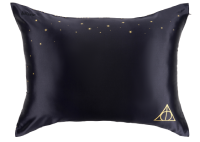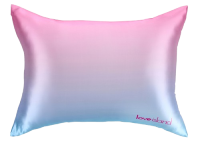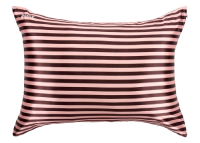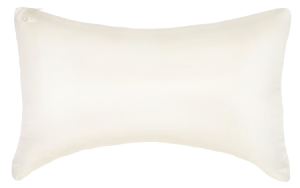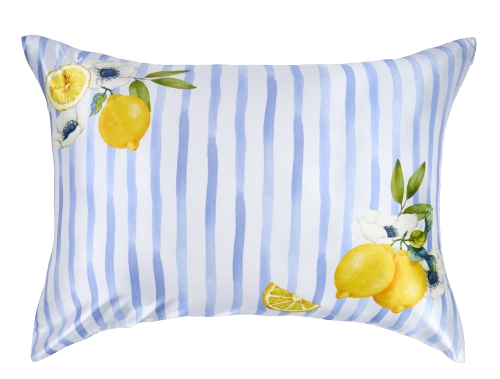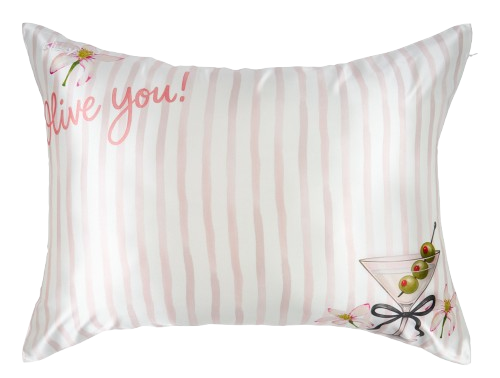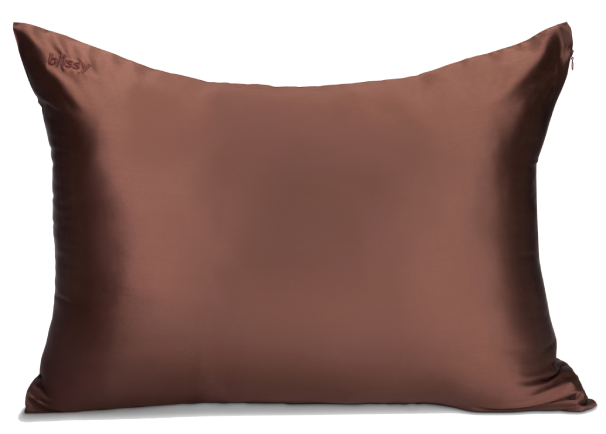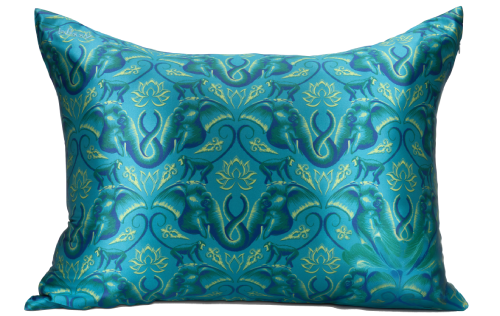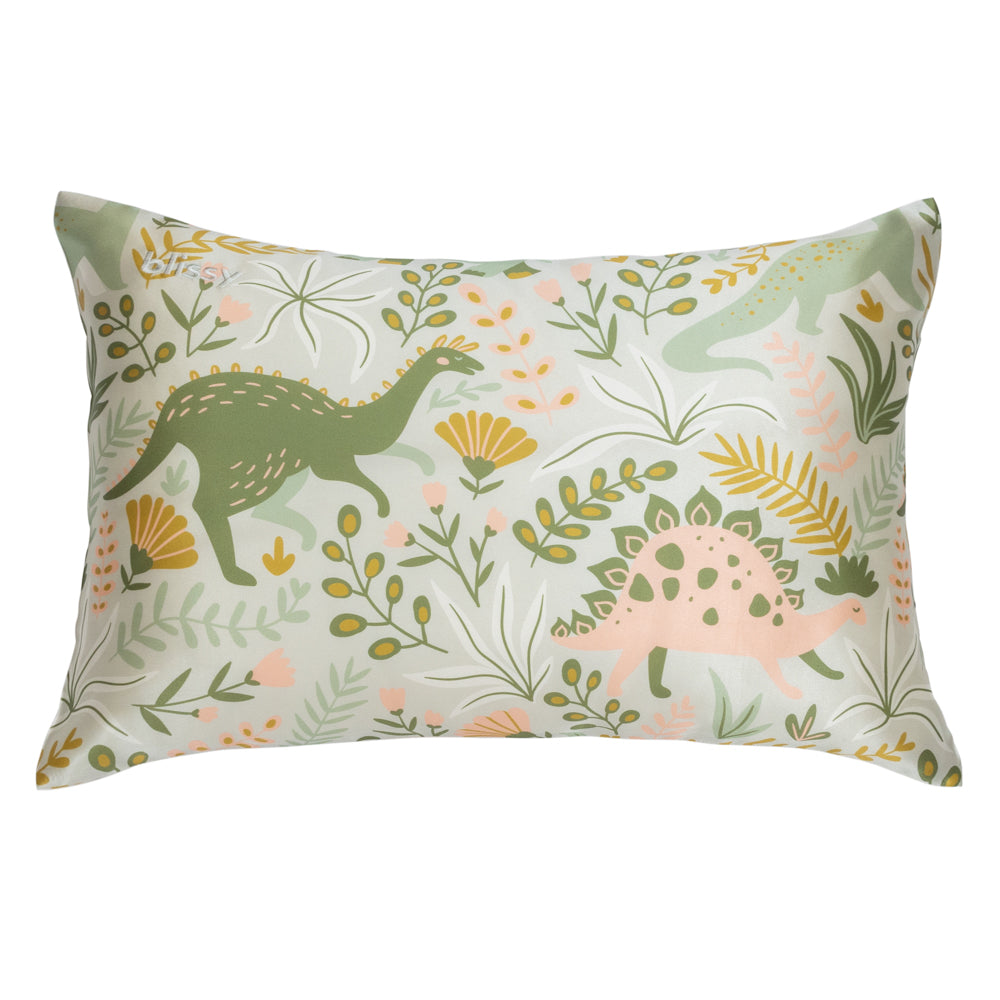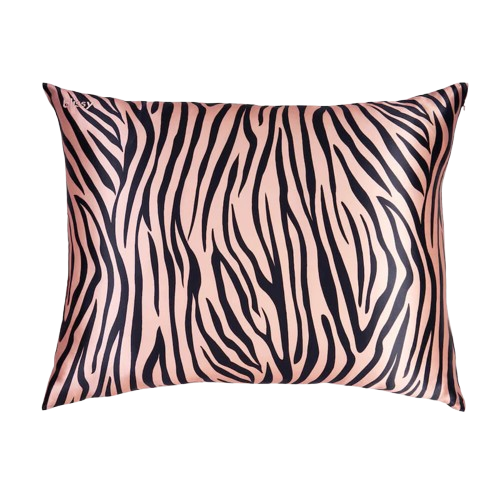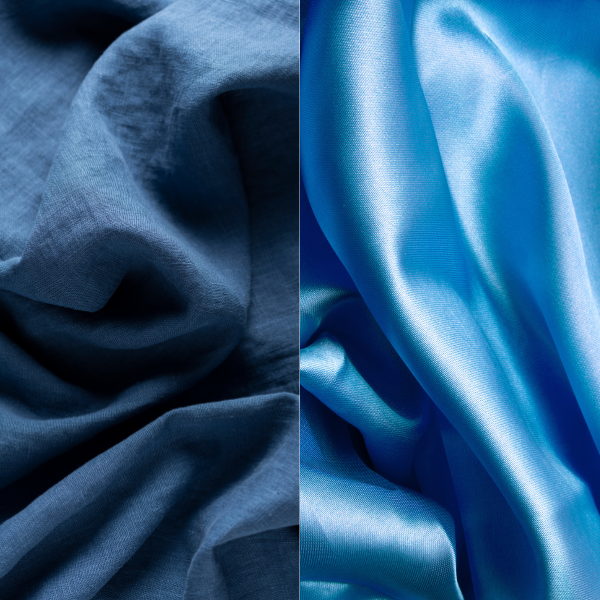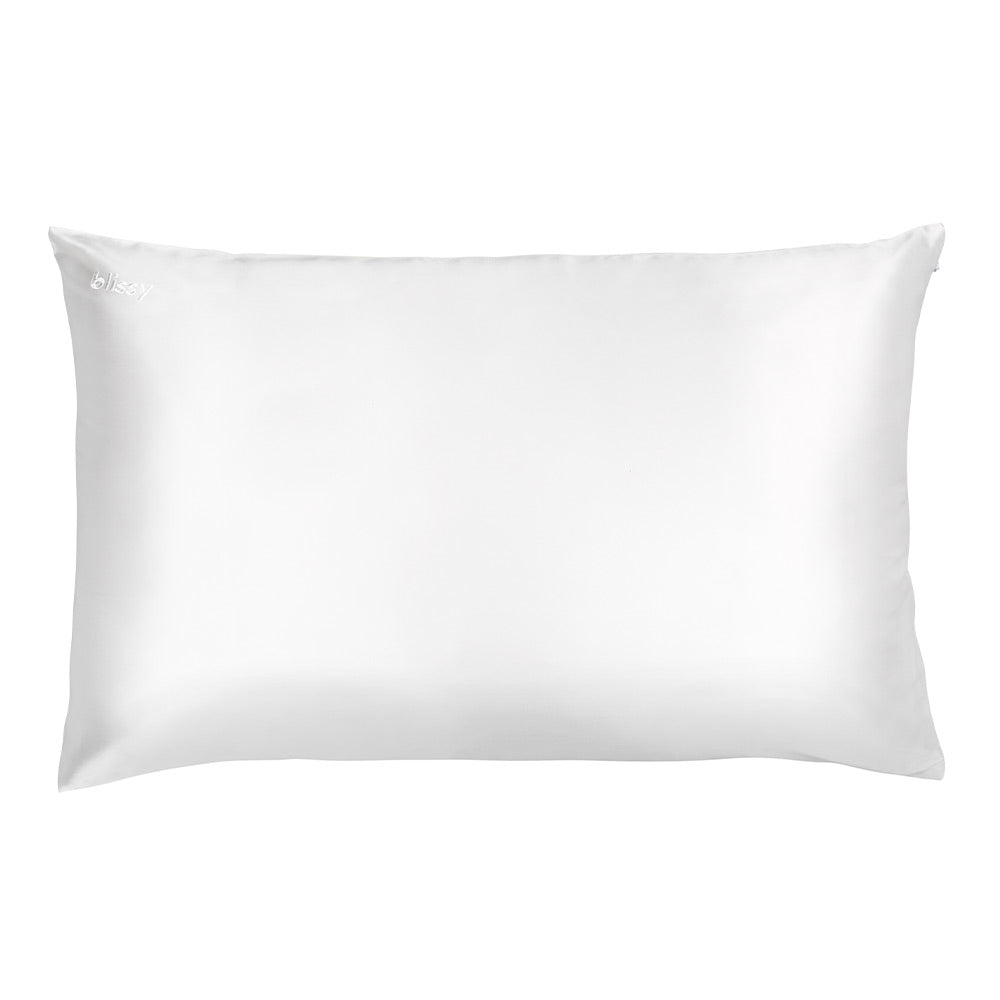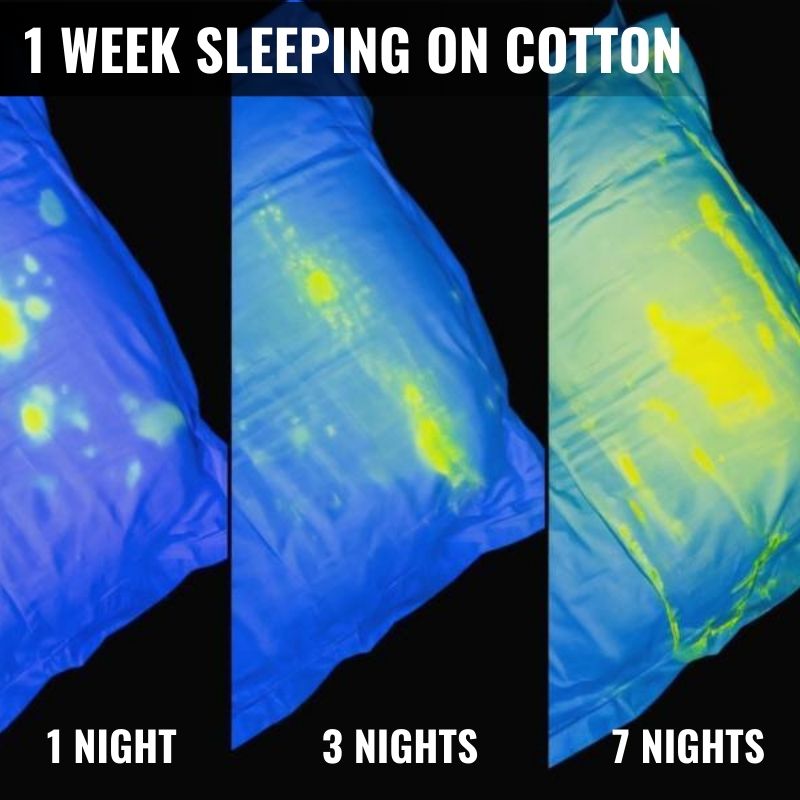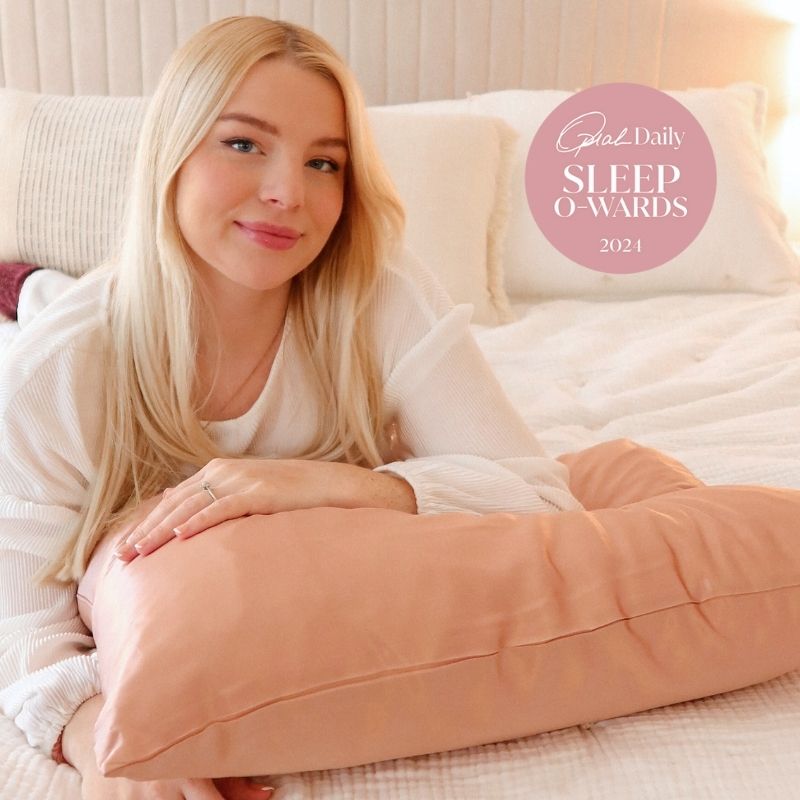Listen to an audio transcription of this post
Key takeaways:
-
Linen wrinkles easily and lacks silk's softness.
-
Silk prevents skin damage and hair breakage more than linen.
-
Linen's rough texture is not as soothing as silk.
-
Silk pillowcases provide better sleep than linen or cotton.
There's no denying that a good night's sleep is important for both our physical and mental health. But did you know that the type of pillowcase you sleep on plays a role in how well you sleep and impacts the health of your skin and hair?
Recently there has been more awareness on the topic of how our health may be affected by the textiles we allow to touch our skin. While certain natural fabrics can improve our quality of life, there are also textiles out there that might cause more harm than good.
According to the Environmental Science and Pollution Research Institute, research has even shown that certain chemically treated textiles may penetrate the skin and cause negative health effects.

Considering Sleep
Although it might not be obvious, your pillowcase is probably your most frequently used personal item. Think about it—your pillowcase touches your hair and skin for long hours each night. It also probably goes unwashed for longer periods than many of your clothing garments which we wash after one or two uses.
Since we use our pillowcases each night, it's important to understand how our pillowcases affect how we look, how well we sleep, and our general health.
We'll be examining 3 fabrics to see which natural and breathable fabric is best for pillowcases and bed linen:
-
Linen (derived from the flax plant)
-
Silk
-
Cotton

Why cotton sheets and pillowcases might not be the best choice
Due to its low cost and abundant availability, cotton is typically the most popular natural fabric used for bed linens. However, take notice: compared to other natural fibers, cotton sheets and pillowcases also come with some major pitfalls.
Cotton sheets and pillowcases are less likely to last as long as those made of high-quality linen or silk. Sheets that aren't durable mean that you'll need to spend money replacing bedding
Cotton is also not as breathable as silk and linen, making them a poor choice for hot summer nights
Cotton is not hypoallergenic. This means that it can trigger allergies and rashes in some people. Silk and linen are both hypoallergenic options that may be better suited for those with allergies or sensitivities.
It has been reported by news outlets such as The Guardian that Egyptian cotton, a premium fabric that comes with a high price tag has been linked with unethical labor conditions in its manufacturing.

Linen vs Silk Fabric
When it comes to the right material for bedding, both silk and linen have many advantages over cotton due to the qualities of these fabrics. Silk and linen are both highly desirable fabrics considered superior to cotton.
The two fabrics share a few common similarities:
- Both fabrics are highly breathable
- Both fabrics are hypoallergenic materials
- Both fabrics are extremely durable
- Both fabrics are made of natural fibers
Since silk and linen are so breathable, they keep you cool and comfortable during hot weather. And with both fabrics being hypoallergenic, they're ideal for those with allergies or sensitive skin.

Both fabrics bedding are made from tightly woven fabrics—this makes bed linen from these fabrics extremely durable, especially when compared to cotton sheets.
And both fabrics are made of natural fibers—linen comes from the flax plant and silk comes from the natural protein fiber produced by silkworms.
As you can see, both silk and linen have some strengths in common.
But which fabric reigns supreme?
So which of these natural fiber fabrics should be touching your skin and hair all night: linen or silk?
Let's compare and contrast the qualities of silk and linen fabric to see which of these popular fibers are more conducive to good sleep as well as beautiful skin and hair.
Linen vs Cotton: Linen Fabric Pros and Cons
Let's examine some of the pros and cons of linen. Having an understanding of the fabric's strengths and weaknesses will provide us with the information we need when determining whether linen or silk pillowcases are more beneficial.
The pros:
- Strong durability
- Moisture-wicking ability
Since linen is strong and durable, it can be a great choice for those who want their bedding to last. Linen is also well known for its moisture-wicking ability. This makes it a good option for those who tend to sweat at night.

Unfortunately, there are certain problems and issues that arise with using linen fabric for bedding. Consider these negative aspects before making a decision.
The cons
- It can have a rough texture
- Linen wrinkles very easily
- Linen is one of the most expensive fabrics
Linen's biggest downside is that it's not the most comfortable fabric. For many people, this is of utmost importance when shopping for pillowcases and sheets.
Also, if aesthetic is important and you enjoy a sleek look, linen may not be the best option for you as it will begin wrinkling the moment you interact with it.
When compared to cotton, linen can be on the pricey side—so if you're shopping on a budget, you'll need to weigh that as well.
Linen vs Silk: Benefits for Sleep
Body temperature plays an important role in regulating sleep. The body's internal temperature naturally dips at night, which helps signal to the brain that it is time to sleep. This dip in temperature is thought to promote drowsiness and prepare the body for rest.
Sleeping in a cooler environment has been linked with deeper, more restful sleep. It is known that using a silk pillowcase can help promote a healthy sleep cycle because silk is naturally temperature regulating.

Silk is a natural material that is both breathable and temperature regulating. This means that it will keep your head and face cool in summer months and warm in winter months. Using a silk pillowcase can help you get the most out of your slumber by promoting deep, restful sleep.
Another factor that affects sleep quality is comfort. Silk is known as being the softest, most luxurious fabric in the world. Compared to silk, linen is rough and stiff. High-quality silk pillowcases are many times softer than linen and are buttery soft to the touch each and every time.
The verdict: Silk wins
When it comes to a pillowcase, comfort is king. Between silk's superior softness and temperature regulating qualities when compared with linen, silk is the better fabric when it comes to sleep comfort.
Linen vs Silk: Benefits for Skin
Mulberry silk is especially beneficial for the skin. Silk pillowcases provide a smooth, gentle surface that can help reduce friction and irritation. This can be helpful for people who suffer from conditions like acne, eczema, and psoriasis. But it's also beneficial for normal skin as well.
The smooth surface of a silk pillowcase can also help prevent fine lines and wrinkles. Silk pillowcases provide a barrier between your skin and the fabric of your pillow, which helps reduce the amount of friction your skin experiences overnight. This can in turn help to prevent the formation of fine lines and wrinkles.

Additionally, silk is naturally hypoallergenic and antimicrobial, which helps keep the skin clean and free of bacteria. This can be a massive help if you have acne-prone skin.
Linen pillowcases, on the other hand, are known for being rough and absorbent. This means that they can actually end up drying out your skin overnight. If you have dry skin, this can exacerbate the problem and lead to irritation. And they can also cause friction and possibly irritation to more sensitive skin.
The verdict: Silk wins
If you’re looking for a pillowcase that will be gentle on your skin, fight breakouts, and help you avoid wrinkles, silk is the way to go.
Linen vs Silk: Benefits for Hair
Hair is more vulnerable to damage while we sleep than we'd like to think. Unlike cotton, which can absorb moisture from your hair and skin, silk is a natural fiber that allows your skin and hair to retain their natural moisture. This can help keep your skin hydrated and prevent your hair from becoming dry and brittle.

Here are a few reasons why silk is the better choice for hair:
- Silk is softer than linen, which means it is less likely to cause hair breakage
- Silk pillowcases help keep hair hydrated and can even help reduce frizz
- Silk pillowcases allow hair to slide across the surface more easily, which helps prevent tangles and knots
- Silk is a natural protein fiber which means it is less likely to irritate the scalp and cause allergic reactions
The verdict: Silk wins
Silk pillowcases are considered the gold standard and far superior to linen pillowcases when it comes to hair care.
Why Mulberry Silk is the Best Choice
There's no denying the luxurious feel of silk pillowcases. No other fabric has the unique qualities that make silk the obvious choice for the ideal pillowcase.
If you're looking for a top-quality 100% mulberry pillowcase that will help you get a good night's sleep and give you gorgeous hair and skin, choose Blissy.
Read More: How Blissy Become the World's Best Silk Pillowcase Brand
Stay away from synthetic alternatives
To get the most benefits possible, stay away from "silky textured" pillowcases made with fabric blends or synthetic alternatives. It's also important to consider the quality of the silk being used to make the pillowcases.
Blissy makes the Best
One of the thing that sets Blissy's pillowcases apart from other silk pillowcase brands is the silk quality and unique design. Our silk is made from the 6A 22-momme long strand mulberry silk, which is the highest quality silk available.

When it comes to pillowcases, you want something that's going to be gentle on your skin and hair. But you also want something that's easy to care for, which is why Blissy silk is machine washable.
Blissy's 100% mulberry silk pillowcases are the perfect choice for anyone looking for a luxurious and comfortable sleep experience!




